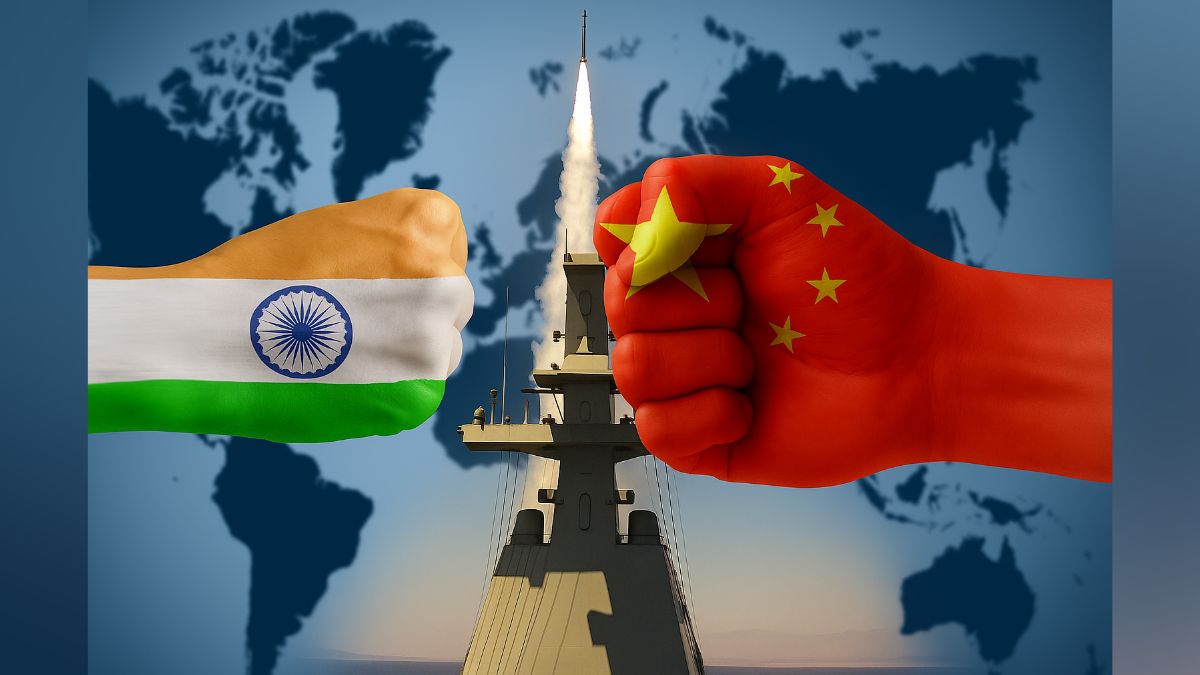A striking contrast has emerged in the Middle East conflict as weapons from India and China played crucial roles on opposing sides of the Israel-Iran military showdown, with the battlefield offering a revealing glimpse into their effectiveness, limitations, and geopolitical implications.
The Israel-Iran conflict is the second such instance, all within a couple of months of Operation Sindoor, when India-made and China-made weapon systems have clashed. In both the military conflicts — India vs Pakistan in May and Israel vs Iran in June — Indian weapons have trumped the Chinese.
How has India’s Barak Magen proven its mettle at sea in Operation Rising Lion?
Israel’s successful interception of Iranian drones using the Barak Magen air defence system co-developed with India marked a major operational milestone.
On June 16, the Israeli Navy used the naval version of this system to shoot down eight Iranian drones threatening its Sa’ar 6 corvettes.
Built on the Indo-Israeli Barak‑8 platform, the Barak Magen features Indian-made solid rocket propellants and command modules, testifying to the growing technological sophistication of Indian missile systems.
Israel’s Operation Rising Lion, which began on June 13, showcased the seamless integration of Indian missile defence systems with Israeli and US air power.
Indian components were embedded in both defensive and offensive assets — from Barak interceptors at sea to components in Israel’s broader air-defence network.
Analysts point to Barak’s performance as not just a tactical success but also a strategic endorsement of India’s growing defence manufacturing credibility.
How is China’s hidden hand in Iran’s missile arsenal playing out?
In contrast, Iran’s offensive operations relied heavily on Chinese-sourced technology and material. Over 1,000 tonnes of sodium perchlorate, a key ingredient in solid-propellant missile fuel, were shipped from China to Iran in early 2025.
This enabled Tehran to launch dozens of ballistic missiles, including Qassem and Kheibar Shekan variants, aimed at Israeli cities such as Tel Aviv, Haifa, and Rishon LeZion.
Though many of these were intercepted, a number managed to evade Israel’s Iron Dome and Arrow systems, causing significant damage.
Chinese-origin gyroscopic systems, guidance units, and production infrastructure, some dating back to the 1980s, remain embedded in Iran’s missile ecosystem.
While direct arms sales from China to Iran reportedly ceased post-2005, dual-use technology transfers have continued, enabling Iran’s sustained missile capacity.
What is the efficacy of Indian, Chinese defence systems in the Israel-Iran war?
On the battlefield, India’s contribution was largely defensive and precision-based, helping Israel intercept aerial threats with minimal collateral damage.
The Barak Magen system’s 100% intercept success rate during the naval engagement stands out as a major highlight of India’s defence export potential. It also demonstrated high interoperability with Western and Israeli platforms.
Meanwhile, China’s contributions to Iran’s arsenal were offensive and volume-driven, focused on missile saturation rather than precision.
Iranian strikes, powered by Chinese-fueled missiles, demonstrated range and payload, but were largely blunted by Israeli and US defences. The lack of precision and high interception rate exposed the limits of these systems in modern air-defence environments.
What are the Geopolitical Implications?
This contrast is more than tactical. It underscores the strategic choices made by New Delhi and Beijing.
India’s collaboration with Israel reflects its tilt toward US-aligned security architectures and an emphasis on quality, precision, and multilateral interoperability.
The performance of the Barak system may open new markets for Indian defence firms in Europe and Southeast Asia.
China’s backing of Iran’s missile ecosystem, albeit covert and plausibly deniable, underscores Beijing’s balancing act in the region.
Its support enables Iran to remain a potent regional actor, though its weapons’ limitations in this war may raise questions about long-term efficacy and reliability.
The 2025 Israel-Iran war offered a rare real-world stress test of Indian and Chinese defence systems.
India’s tech, used in defence, proved highly effective, precise, and interoperable.
Chinese inputs, used offensively, powered Iran’s strikes but struggled to achieve a strategic breakthrough.
As the dust settles, the world is likely to take note: India is emerging not just as a defence buyer, but as a proven defence partner. China, meanwhile, continues to operate from the shadows: powerful but not yet precise.
